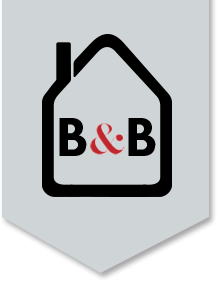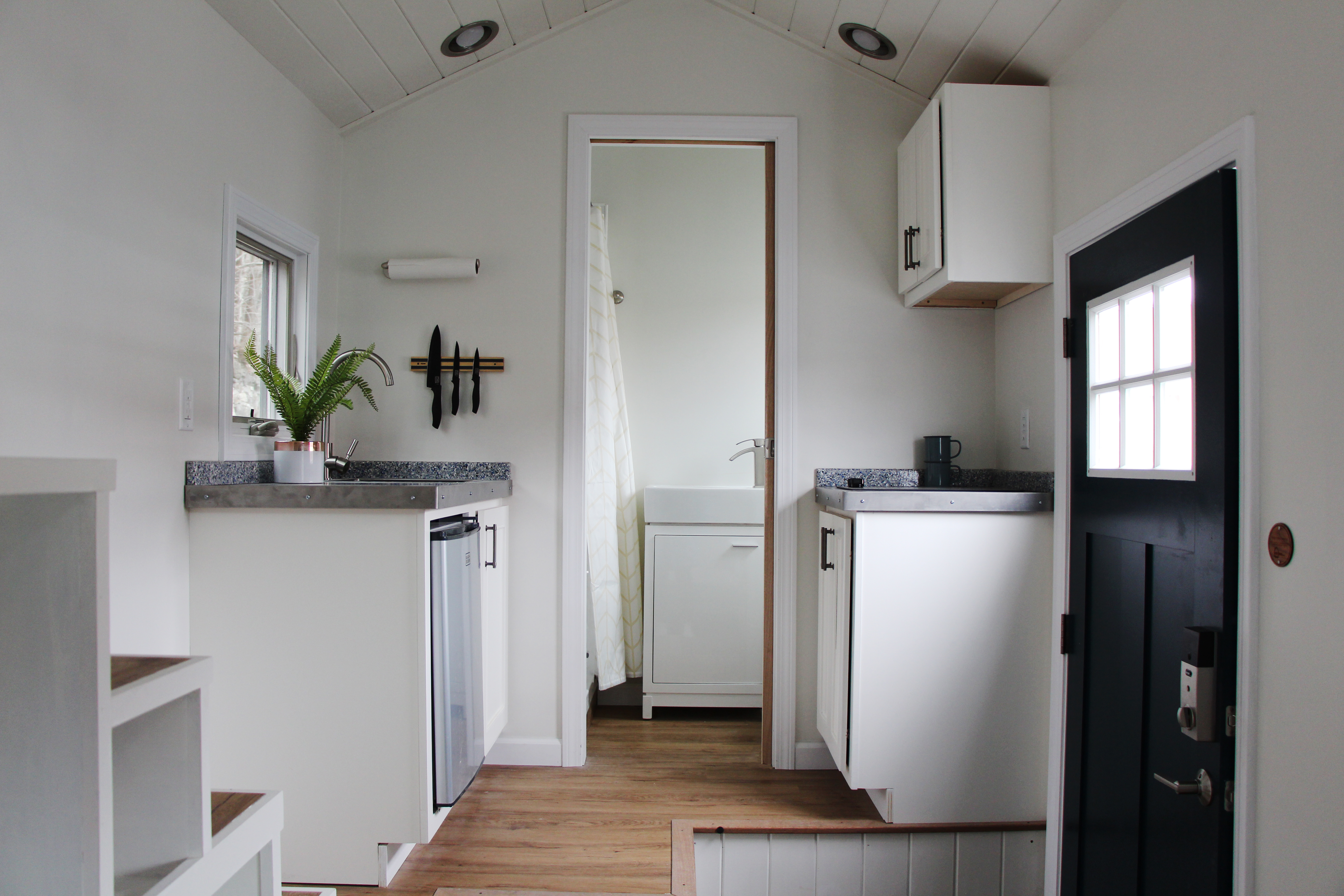How To Save A Ton of Money on Your Tiny House Build
/in Pricing /by Rick PorcoMany people who want to go tiny do so because it’s a wallet-friendly housing choice. Whether for a primary residence or a vacation home, tiny houses use less materials and less energy over time than traditional single family homes.
Much of saving money on a tiny house build involves understanding the many different options available to you in the tiny house buying process. Here are some points to consider when saving money in your tiny house.

Go with an already-designed tiny house, not a custom design
This is the single greatest money-saving action we can suggest. Custom designs will cost more than a house that’s already in our Signature Designs, and this applies to every step of the process, not just the design phase. Even after the designer’s finished with the blueprints, the builders will need to spend more time on each aspect of the house, since it’s not one they’ve built before. Time is a very large percentage of the final cost, and cutting down on our time spent working through new challenges with a custom tiny house will cut down your overall final cost.
But don’t worry, you can still make your tiny house your own, even if it’s picked out of our catalogue of Signature Models. You’ll be able to choose all the colors, materials, and fixtures for your tiny house.
We offer three options for making your tiny house your own:
CUSTOMIZATION CHOICES, like exterior and interior wall materials, appliances, colors, open shelving versus cabinetry with doors, are always free— these choices will be reflected in the materials and installation cost. These choices don’t require the tiny house designer to change anything about the blueprints of the house.
ALTERATIONS TO OUR EXISTING BLUEPRINTS are $800, which includes two free revisions. Any further revisions are billed at $50 per hour of the designer’s time. The extra build time and materials for an altered floor plan will be built into the quote. Alterations include adding a loft to houses where possible, changing window sizes and locations, designing a custom staircase, and changing the roof shape where possible.
ENTIRELY ORIGINAL DESIGNS are available when we will be building three or more tiny houses; there is a design fee of $2500. This includes two free revisions. Any further revisions are billed at $50 per hour of the designer’s time. The extra time taken to build a custom, rather than a mass-produced, tiny house will be built into the quote. Custom tiny houses generally start at $90,000.
Choose standard materials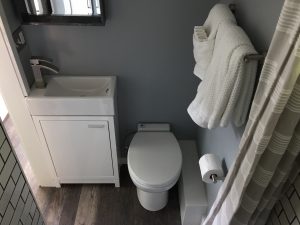
We can build anything you want as long as it’s within the RVIA’s safety standards. One of the owners of B&B Tiny Houses, Mitch, likes to say “we’ll build a slide off the roof” (we haven’t received an order for that one yet)! However, just because we can build something doesn’t mean it’s not going to cost money. Similarly to the previous section on choosing a standard design, choosing standard materials that we already know how to install and that they work well in tiny houses will save us time and save you money.
Our list of common upgrades for our tiny houses doesn’t represent everything we can do and everything we’ve ever built into a tiny house, but it’s a great representation of what upgrades we are comfortable making and already know how to install efficiently. We are happy to research, price, design for, and build with materials or fixtures that aren’t on that list: we’ll just have to build the extra time spent on non-standard materials into the final price. Don’t worry: we think you’ll be very happy finding exactly what you want within that extensive list. Sometimes we even have leftover materials from a previous project that might work well in your house that we can offer you a discount on: we’ll be sure to let you know if so.
Choose inexpensive materials & fixtures from our list
Another way to save money on your tiny house is to go with basic materials. Each tiny house is listed with a starting price. This starting price includes basic materials and fixtures. Here’s a list of our basic materials and what an upgraded material in the same category might be. The difference between tiny houses using all basic materials and tiny houses using all upgraded materials can be quite significant in the final total.
The kitchen shown in this Hoosic tiny house uses all basic materials included in the starting price: a two-burner built-in cooktop, a small kitchen sink, a mini-fridge built into the cabinetry. Of course, you can upgrade this kitchen to include an apartment-size fridge or built in fridge and freezer drawers, a propane stove and oven, a large undermount sink, and a convection oven/microwave (see these features in the Kinderhook tiny house), but this will, of course, cost much more. Being frugal with your appliance choices makes for a great deal of savings in the end.
| Starting Price Includes: | Upgraded Tiny House Might Include: | |
| Exterior | Vinyl Clapboard | Vertical Solid Wood Shiplap |
| Roofing | Asphalt Shingle | Ribbed Metal |
| Interior Walls | Sheetrock | Solid Wood Shiplap |
| Climate Control | In-Wall Electric Heater | Mini Split (Electric Heating & Cooling) |
| Cooking | 2-Burner Glass Cooktop | Stainless Steel 3-Burner Propane Stove/Oven with Range Hood |
| Refrigerator | Mini-Fridge | Apartment Size Fridge (24″ w x 68″ h x 25′ d, 10.1 cu. ft. |
| Dishwashing | Kitchen Sink | Kitchen Sink & Dishwasher (Certain Models Only) |
| Shower/Tub Insert | Vinyl | Custom Tile |
| Bathroom Sink | Mini Sink with Vanity | Mini or Full-Size Sink with Vanity |
| Washer/Dryer | Not Included |
Washer/Dryer Combo (Certain Models Only– Not Available with Solar Power)
|
| Toilet | Your Choice- Inquire For Pricing | Your Choice- Inquire For Pricing |
Choose standard power and water hookups rather than going off-grid
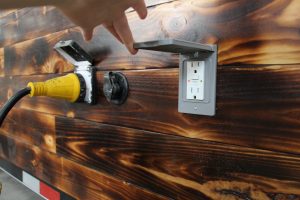
Going off-grid in a tiny house is possible, but the up-front cost isn’t cheap. Likewise, if you’ll want to run electric appliances in your off-grid tiny house, you can, but not as many or as often as you might when you’re on grid. The cost of setting up a solar system capable of running appliances in the same way that one normally might in an on-grid situation can double the cost of the tiny house itself! Running large appliances like a washer/dryer, or many appliances at once, will require large battery storage as well as an array of many solar panels: more that can fit onto the roof of a tiny house.
If you will go with off-grid solar and want to be frugal (or if you’d like to travel with your solar panels), you’ll have to eliminate most electric-run appliances from your list and plan on using other sources of energy, like propane.
The simplest, cheapest power source for your tiny house is running an extension cord and a potable water hose (with heat tape in winter!) from a building that already has power and water. Many people who live in their tiny houses full-time park their houses beside or behind the house of a friend, relative or landlord. Others may lease or purchase a property that already has a power source. The cost of these hookups is included in the starting price of all our tiny houses.
Check out this blog post for more info on how to hook up your tiny house to water and power.
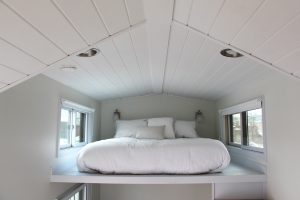
Ready to get started on your tiny house?
Choose your favorite of our Signature Tiny House Models and then get an Instant Estimate for that house with the features and fixtures you want.
When you’re comfortable with your price, contact us to get started.
The 8 Steps To Buying A Tiny House: Everything You’ll Need To Do To Go Tiny
/in Pricing /by Rick PorcoYou’ve been dreaming about your very own tiny house for years. Are you ready to take the leap?
Here are all the steps you’ll take in the tiny house buying process.
Choose a tiny house site.
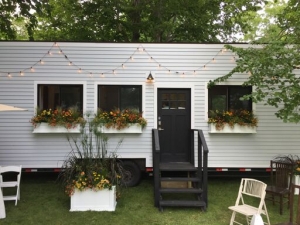 For some this is easy: a backyard, a piece of property in a town that allows RVs, or an RV park. For those who don’t yet know where to put their tiny house, finding a location to put their tiny house is a crucial step. We’ll build your tiny house differently depending on whether you plan to travel often with your house or it’ll stay in one place. There are many different customization options available for your tiny house, which often depend on what kind of utilities are available at your tiny house site.
For some this is easy: a backyard, a piece of property in a town that allows RVs, or an RV park. For those who don’t yet know where to put their tiny house, finding a location to put their tiny house is a crucial step. We’ll build your tiny house differently depending on whether you plan to travel often with your house or it’ll stay in one place. There are many different customization options available for your tiny house, which often depend on what kind of utilities are available at your tiny house site.
You’ll need to make sure your site has an access road and enough room for a truck to deliver the tiny house. If you send us the layout of your property we’ll help you determine the best spot to place your tiny house during your design session.
Here’s a blog post on where to put your tiny house, and what to know if you’re thinking of buying land for your tiny house.
One way to find a location is through networking. Here’s a list of tiny house networking sites: most of these groups are through Facebook or Meetup.
If you’re finding it difficult to find a town that already allows tiny houses, you’re not alone. In fact, most towns’ Planning/Zoning Boards haven’t even considered whether to allow tiny houses on wheels: all it’ll take to start the wheels turning (pun intended, sorry) is for someone to ask. The American Tiny House Association (Website, Facebook) is a great resource for those who would like to ask for permission to live in their tiny houses.
Choose a tiny house model.
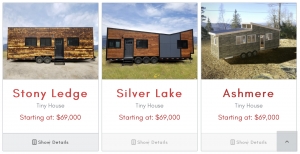 Know where you’ll put your tiny house? Great! Browse our tiny house catalogue online and decide which model is the best for you. Each of our models is customizable: customizations like materials and paint colors are free, while having our designer change the blueprints is an extra fee.
Know where you’ll put your tiny house? Great! Browse our tiny house catalogue online and decide which model is the best for you. Each of our models is customizable: customizations like materials and paint colors are free, while having our designer change the blueprints is an extra fee.
Some of our tiny houses are the road-legal limit of 8 1/2′ wide. If you’re looking for a tiny house you can tow with you, check out our Lightweight Models for Towing. We also offer Park Model Tiny Houses at 10′ wide, the Taconic and the Kinderhook. Park Models are great when you want a little extra elbow room and don’t plan to move your tiny house after it’s put in place.
Don’t want to climb up a ladder to go to bed? Click here to see our models with a first-floor bed.
Get your finances ready.
 B&B’s Tiny Houses on wheels are inspected by the Recreation Vehicle Industry Association, or the RVIA. Your tiny house will come with an individual seal showing it’s been certified. Because they’re certified to RVIA standards, our tiny houses are legally considered RVs, and can get RV financing, insurance, and access to RV parks. Having this certification also helps when explaining to your town’s Planning and Zoning Board exactly what a tiny house is and how it’s certified.
B&B’s Tiny Houses on wheels are inspected by the Recreation Vehicle Industry Association, or the RVIA. Your tiny house will come with an individual seal showing it’s been certified. Because they’re certified to RVIA standards, our tiny houses are legally considered RVs, and can get RV financing, insurance, and access to RV parks. Having this certification also helps when explaining to your town’s Planning and Zoning Board exactly what a tiny house is and how it’s certified.
If you’ll use financing, down payments differ based on the financial institution, but they’re generally between 20 and 25%. If you’ll pay cash, we generally charge 60% up front and 40% when the house is complete. You’ll need to have this amount saved before you buy a tiny house.
To find out about how much the tiny house you want would cost, try our Instant Estimate Generator. This will give you a ballpark estimate so you’ll know how much to save. If you’re not comfortable with your first estimate, you can go back through the Estimator as many times as you’d like, choosing different options. Here are some suggested financial institutions for getting RV financing for your tiny house.
Keep in mind that the cost of the tiny house itself isn’t the only expense you may have when placing a tiny house. Depending on your site and what your municipality requires, you may need to have utilities connected, a gravel or concrete pad poured, and anchors installed. If you’re not towing your tiny house yourself, you’ll need to pay about $2 per mile for delivery (we’ll connect you with our trusted delivery company). It’s important to factor in the all-in cost of buying a tiny house before paying a deposit.
Schedule a tiny house design session.
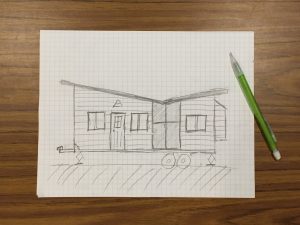 Whether you’d like to make changes to the blueprints of the tiny house or not, a design session is the next step. If the only design changes are your selections for colors, materials and fixtures, these choices are free to make; the cost of the materials you choose will be reflected in your final quote. If you’ll make changes to the blueprints, we charge a Design Alteration fee before our design session (scroll down past the customization options to see the fee).
Whether you’d like to make changes to the blueprints of the tiny house or not, a design session is the next step. If the only design changes are your selections for colors, materials and fixtures, these choices are free to make; the cost of the materials you choose will be reflected in your final quote. If you’ll make changes to the blueprints, we charge a Design Alteration fee before our design session (scroll down past the customization options to see the fee).
Contact us to set up a time for a design session, whether via Skype, phone, or in-person. If your session is in person, we’ll walk you through any tiny house that we may have at our shop so you can get a feel for the space. During our design session, we’ll go through, in detail, which options you’d like, and the pros and cons of each depending on your location and how you’ll be using your tiny house. You’ll have a chance to get your tiny house questions answered as well as learn more about which options are realistic for your living situation.
We’ll create a quote for you and send you a contract.
 After your design session, our team will create a quote for your tiny house. If you need changes to the existing plans, we’ll create a new drawing: this can take a few weeks depending on our design pipeline.
After your design session, our team will create a quote for your tiny house. If you need changes to the existing plans, we’ll create a new drawing: this can take a few weeks depending on our design pipeline.
We’ll review your quote and final customization plan (your choices for colors, materials, fixtures, etc.) with you.
When you’re ready to finalize your choices and move forward, we’ll send you a build contract.
When we receive your signed contract and first payment (if you’re paying with cash, 60%; if you’re financing, we’ll need the payment from your financial institution) we’ll start ordering materials for your tiny house.
We’ll build your tiny house.
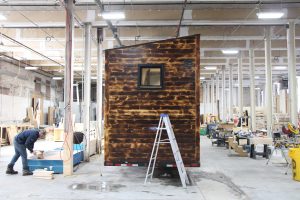 Our build schedule varies throughout the year: sometimes we can start building a tiny house right away, and other times there will be other projects in the pipeline. We’ll be sure to keep you updated on our build schedule.
Our build schedule varies throughout the year: sometimes we can start building a tiny house right away, and other times there will be other projects in the pipeline. We’ll be sure to keep you updated on our build schedule.
Trailers take about five weeks to build; your tiny house, depending on its size and level of complexity, should take 6-12 weeks after that depending on our build schedule. We’ll keep in touch with you during the build process.
Get your site ready.
 The needs of tiny house sites vary greatly. If you’ll be traveling with your tiny house and parking it at RV Parks, there’s not much you’ll need to do other than reserve your spot. If you’ll be keeping your tiny house in one place, you’ll need to make sure you can get water and power to your tiny house and waste water away from it. Depending on the permanency of your tiny house, you may want to have a gravel or concrete pad poured, and lay water and electric lines. If you’re going solar, you’ll need to contract with a solar company to have your panels installed on your site.
The needs of tiny house sites vary greatly. If you’ll be traveling with your tiny house and parking it at RV Parks, there’s not much you’ll need to do other than reserve your spot. If you’ll be keeping your tiny house in one place, you’ll need to make sure you can get water and power to your tiny house and waste water away from it. Depending on the permanency of your tiny house, you may want to have a gravel or concrete pad poured, and lay water and electric lines. If you’re going solar, you’ll need to contract with a solar company to have your panels installed on your site.
Pick up your tiny house at our shop or have it delivered to your site.
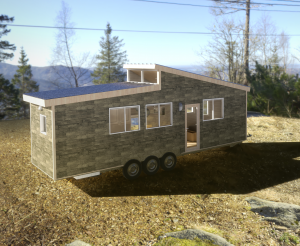 If you’ll be towing your tiny house, here’s a primer on what size vehicle you’ll need.
If you’ll be towing your tiny house, here’s a primer on what size vehicle you’ll need.
Those who do not plan to tow their own tiny house may have it professionally delivered to their site. Contact us for a delivery estimate. We’ll schedule a time with you to ensure you’re on-site when your house is delivered, and we’ll answer any questions you might have about setting it in place.
Ready to choose a tiny house model? Check out our Tiny House Designs and then get an Instant Estimate.
Have Questions? Contact us.
Comparing the True Cost of a Tiny House Versus a Traditional House
/in Pricing /by Rick PorcoTiny Houses at first glance are much cheaper than traditional houses. However, let’s take a closer look at the costs involved in tiny house living versus traditional house living.
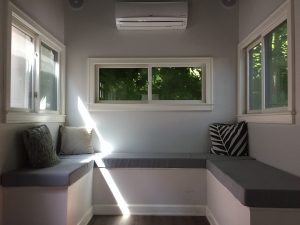
The cost to build a tiny house is more per square foot, but less overall.
Why? Tiny houses are smaller. The cheapest square footage in any home, whether tiny or not, is empty space. The most expensive space per square foot in a home is the kitchen and bathroom, which have appliances installed that need electricity and plumbing. A tiny house on wheels still has all the appliances and fixtures: a toilet, shower, and sink in the bathroom, and a fridge, sink, and cooking device in the kitchen, just like a “big house”; what we’re eliminating when building tiny is the cheapest space: empty floor space. That’s why the cost per square foot is higher in a tiny house.
However, in a tiny house, the overall material cost is less than in a traditional house, simply because there’s less space, which means less material, labor, and time to build.
The cost of a tiny house doesn’t include land or hookups for water and electric.
With a tiny house on wheels, whether you’re planning to buy land, lease a spot in an RV park or stay in the backyard of someone you’re renting a space from, you’ll need to factor this cost into your overall budget. Tiny houses can be connected to RV hookups in an RV park or permanently hooked into water, septic and sewer. If you’re buying raw land (with no water and power) you’ll need to have a well dug and power connected.
Generally when buying a traditional home it’s already hooked up to utilities and is being sold with a plot of land. Therefore, be sure to factor in not just the cost of the tiny house itself, but the land and hookups when comparing the cost of a tiny house to a traditional home.
Tiny house financing is often for fewer years than traditional mortgages.
B&B’s tiny houses on wheels are certified by the RVIA and therefore financed like RVs. RV financing can be through your own bank or through a national lending institution. As an example, as of 12/21/18 Lightstream’s website lists their RV loans up to 84 months, or 7 years. Traditional mortgages are often 15 or 30 years. Tiny houses, because of their smaller price point and smaller finance time, are usually paid off before a traditional mortgage.
Remember, though, that RV loans are just for the tiny house itself, not the land the house is on. If you’ll be buying a piece of land to put your tiny house on, that would be either paid for all at once or financed separately.
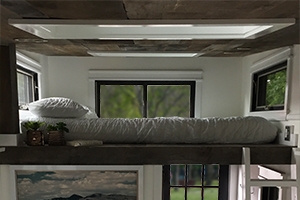
Tiny houses’ utility bills are less.
Tiny houses are smaller than traditional houses, which means less space to heat or cool. Because they’re on wheels, we never know where they’ll end up, so we build our tiny houses to withstand any climate in the continental United States. Our shop is in a rather extreme climate zone so we understand the need to be warm in the winter and cool in the summer. The tiny houses on wheels we have built have been toasty warm in New Hampshire in negative temperatures as well as nice and cool in the Texas heat. Double-glazed windows, high R-value insulation in the floor, ceiling and walls, and efficient heating and cooling systems used in B&B Tiny Houses make for some pretty tiny utility bills.
If your tiny house design gets big enough, in some cases it can make more sense to just buy a regular house.
B&B Tiny Houses’ longest tiny house is 32′ long (on a 30′ trailer with a small overhang) and our widest tiny houses are 10′ wide (the Kinderhook and the Taconic Park Models). If you’re not planning on moving your tiny house, “large” tiny houses can be a great way to get some extra elbow room. When you start going bigger than 10′ x 30′ though, depending on all the other factors mentioned above it may make more financial sense to just have a traditional permanently-affixed home, park home, or modular home built.
To recap, be sure to consider all of the costs involved with living tiny versus living “large”: not just the cost of the houses themselves.
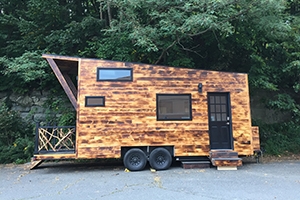
Are You Financially Ready To Buy A Tiny House? 4 Ways to Get the Best Loan for Your Tiny House
/in Pricing /by Rick PorcoFortunately, there are multiple ways to get financing and save up for your tiny house, whether it’s a turnkey RVIA certified Tiny House on Wheels or a DIY shell or frame.
Choosing the Best Tiny House for You
Tiny Houses on Wheels Vs. Tiny or Small Houses on Foundations
Before we talk about the best way to finance your tiny house, let’s talk about the different types of tiny houses. Please note that securing finance for your tiny house will have different processes depending upon if your tiny house is on wheels or on a foundation. Permanently-affixed tiny houses will be able to get traditional construction loans which can include site work. For this article, we will be focusing on financing a tiny house on wheels.
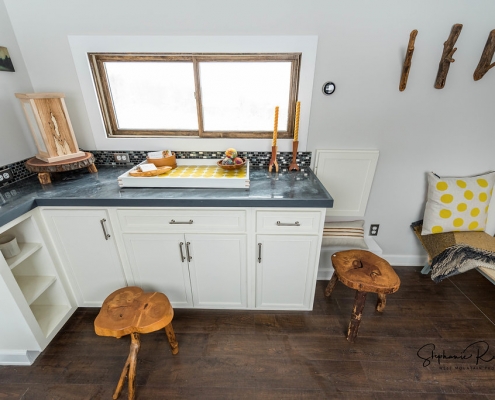 The Brodie Mobile Office photographed by Steph Rapsiarda
The Brodie Mobile Office photographed by Steph Rapsiarda
Tiny House on Wheels: Price Difference Between Original or Off-The-Shelf Design
Building a tiny house of your original design through B&B allows you to create the exact tiny house that you’re envisioning, but due to economies of scale—i.e. custom houses taking longer to build due to the fact that each one is unique and not able to be mass produced— this option can be quite costly. The second option is to buy a pre-designed tiny house. There is a wide variety of options and at B&B we will allow you to customize materials, colors, and appliances (click here for all of the customizable options at B&B). This is a great option for those that want to stay on budget and still put their personal touch on their tiny house.
Build Your Own Tiny House Using a Shell or Frame Kit
The third option is to buy a wood-framed tiny house shell. A tiny house shell has the exterior complete and the interior incomplete. Shells can have windows, doors, plumbing, and electric complete or incomplete depending upon your needs and budget. Lastly, you have the option to buy a steel frame kit for your tiny house. This option ensures that you have a professionally built frame and allows you to customize your tiny house how you please; however, we do not recommend DIY options for anyone that does not have construction experience. The shell and steel frame option are not certified by RVIA, meaning that it would be more difficult to get a loan. Both of these last two options can be a great choice for someone that wants to complete their tiny house by themselves or wants to self-finance their own tiny house in stages. The RVIA cannot certify shell or frame kit options because the tiny house will not have been finished in a RVIA certified location; however, it may be possible to get a personal loan for the shell or frame kit.
If you are DIYing your tiny house, consider all the costs associated with building, not just the materials cost.
Are You Financially Ready To Own A Tiny House?
Consider Your Total Tiny House Cost– Not Just Monthly Loan Payments
Once you have decided on the best tiny house option for you, you will have a better idea of the loan you will need. Because B&B is RVIA certified, you would be qualified to apply for an RV loan for any of our turnkey tiny houses on wheels. When determining your tiny house budget, you will also need to consider monthly costs such as electricity, maintenance, insurance, and where you will be keeping your tiny house.
Read our article on the all-in costs of a tiny house versus a traditional house.
In addition, if you need site work–grading, clearing trees, adding a pad–or infrastructure–fresh water, waste water, and power–you’ll need to consider these costs in your total budget. You will want to estimate these costs before you decide the amount of the loan you’re willing to take out. Just like a home mortgage, your income, credit score, market factors, and down payment will all affect the terms of your loan. After you’re pre-approved, B&B will schedule a design session with you in order to get your final quote.
The Brodie Mobile Office photographed by Steph Rapsiarda
4 Ways to Get the Best Loan for Your Tiny House
Improve Your Credit Score
Improving your credit score will help you lower your monthly payment. This is because the bank views those with higher credit scores as being more reliable and thus will give them better rates and bigger loans. Here are 11 ways to improve your credit score.
Save for Your Down Payment
The more that you save for your down payment, then the lower your monthly payment will be, so start adding to your tiny house piggy bank!
Choose the Best Tiny House Type For You, then Choose Your Floor Plan
After you’ve chosen the best type of tiny house for your needs, whether it’s a DIY frame, shell, or a turnkey tiny house that’s move-in ready (and RVIA-certified), you’ll be able to get an estimate on the floor plan you want and start researching your loan options.
Shop Around
It’s a good idea to contact a few different financial institutions to get the best deal for you. Check out all your tiny house financing options here including getting a Tiny House Loan through Adams Community Bank, an RV loan through Lightstream, and a personal loan through your own bank or credit union.
Why Do Tiny Houses Cost More Per Square Foot?
/in Lifestyle, Pricing /by Rick PorcoTiny Houses Are Smaller, But Cost More Per Square Foot. Why?
Glad you asked! In larger houses, the lower cost per square foot is because large homes have a lot of empty space, which brings the average cost per square foot down. The most expensive areas of a home are the bathroom and kitchen: the rooms with appliances and special fixtures. Just like big houses, tiny houses still have at least one toilet, one shower or tub, one fridge, one stove or cooktop, and one kitchen sink, so you still have to pay for those appliances. (If your tiny house is 1/3 the size of a big house, the cost may not be 1/3 because you’re not paying for 1/3 of a toilet– you still need a whole toilet!) In tiny houses, everything is efficiently packed into a smaller footprint, eliminating the empty floor space– the cheapest part of a big house.
 In addition, tiny house designers and builders have very special skills, and there is much less room for error in constructing a tiny house than in constructing a big house. Because there is less tolerance for error in tiny houses, due to their small size as well as strict building standards ensuring they are safe to travel on the road, more care has to be put into their design and construction.
In addition, tiny house designers and builders have very special skills, and there is much less room for error in constructing a tiny house than in constructing a big house. Because there is less tolerance for error in tiny houses, due to their small size as well as strict building standards ensuring they are safe to travel on the road, more care has to be put into their design and construction.
B&B Micro Manufacturing’s move-in ready tiny houses on wheels are built to the high standards of Recreational Vehicle Industry Association (RVIA), who inspect every step of our build process in surprise visits. Each turnkey tiny house we build is RVIA-certified. (Tiny house shells cannot be RVIA certified because DIY builders aren’t inspected by the RVIA).
What do tiny houses have that larger houses don’t have?
Many tiny houses have built-in furniture which is not included in the cost of an empty larger house. Additionally, some tiny houses use specialty appliances that were designed for boats or RVs, like small stoves, which, although they are smaller cost more than regular-size appliances because they are not sold in the mass quantities regular-size ones are.
What’s the cost of having a custom designed tiny house built versus a pre-designed tiny house?
Due to economies of scale, any tiny house that is custom-designed will, of course, cost more than a tiny house that is made in a production line with the same model of other tiny houses. B&B has quite a few floor plans to choose from for every lifestyle, and each floor plan is customizable for the individual’s needs.
Does it cost more or less overall to build a tiny house versus a big house?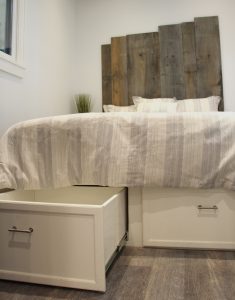
Still, the total cost of building a new-construction tiny houses is, of course, much lower than the cost of having a new big house built.
Likewise, it costs much less over time to pay bills for a tiny house. Heating and cooling a tiny house is more energy-efficient by nature of the space being small. In addition, B&B manufactures all their houses to be extremely energy efficient, whether on- or off-grid, reducing the overall cost of bills over time.
Still have questions about our tiny houses? We’d love to help! Contact us at [email protected].
How To Get Started
Learn more about our process or fill out the form below and one of our tiny house experts will reach out to you.
